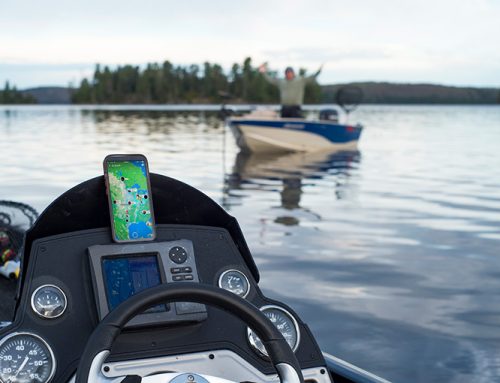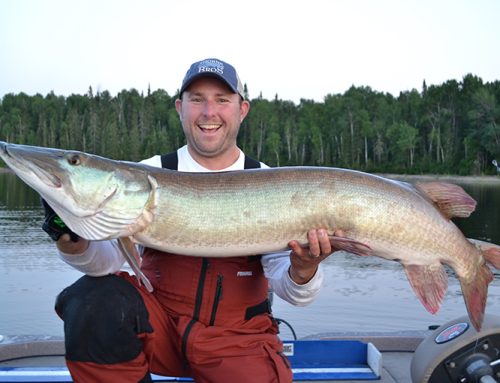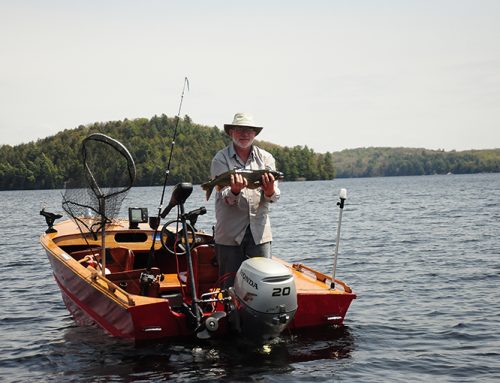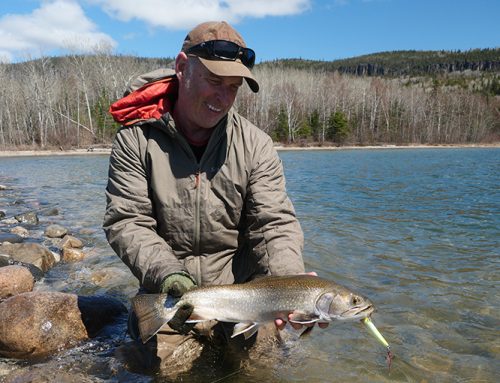
Ontario is dotted with lakes stocked with splake by the Ontario Ministry of Natural Resources and Forestry (MNRF). These hard fighting, great eating fish provide excellent angling opportunities, particularly early in the springtime.
Small splake lakes are among the first to lose ice in the spring and it’s often the first open water fishing trip I make each year.
Walking and ATV trails typically provide access to splake lakes. Anglers can fish from shore or bring in canoes, small boats, and motors to explore the lake.
On the menu
Spring splake often make their presence known. Combining the right location and presentation will get results.
 They are typically found in shallow water during the spring. They gorge on aquatic insects and small minnows that occupy warming shallow water. Soft bottom bays with emerging vegetation are hot-spots for early season splake.
They are typically found in shallow water during the spring. They gorge on aquatic insects and small minnows that occupy warming shallow water. Soft bottom bays with emerging vegetation are hot-spots for early season splake.
Other areas to check out include downed trees, points, and beaver houses. Most splake lakes aren’t very large in size, allowing anglers to cover a great deal of shoreline when searching for fish.
When splake are actively feeding there’s a number of presentations that will produce fish. Casting small in-line spinners, such as Mepps number 1 or 2, is a personal favourite, but not the only option.
Small spoons and crankbaits are also proven producers for springtime splake. Trolling along the shoreline with these baits is a great way to cover water and locate fish.
Another technique worth trying once fish are located is jigging. Casting hair jigs is a fun way to catch active fish, vertical jigging also works. I’ve had success jigging the smallest size Lindy Darter.
Liven it up
There will be days when springtime splake make you work for hits. If they aren’t chasing down spinners, spoons, or crankbaits, try a live bait presentation. Small minnows and crawlers are both excellent choices when trying to entice bites from neutral fish.

One of the best ways to present live bait is under a slip bobber. This technique alone can out-fish other presentations on days when the bite is slow.
This versatile approach can be fished from shore or while anchored or drifting in a boat. Fishing different depths is easily accomplished by moving the bobber stop up or down the line.
Small jigs or bare hooks with a split-shot up the line will get your bait down to the strike zone. This is an excellent method for fishing around timber, but remember to set the hook quickly before your line gets pulled into the wood.
The facts
Splake are a hybrid fish that result from the crossing of a male brook trout and a female lake trout. They are fast growing, largely due to the fact that they don’t invest energy in reproduction.
It’s common to catch splake in the 15- to- 20 inch range, and although rare, fish over 25-inches can be caught. Like their parent fish, splake have pinkish flesh that makes for excellent table fare.
The MNRF stock these fish in a number of lakes across Ontario. This provides anglers with excellent put-and-take fishing opportunities.
To find a list of stocked lakes visit the Fish ON-Line part of the Ministry’s website.






I am a senior that is very interested in splake fishing in Kawartha Lakes. Fairly easy access would be very helpful